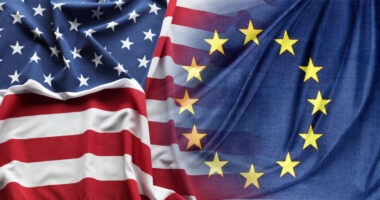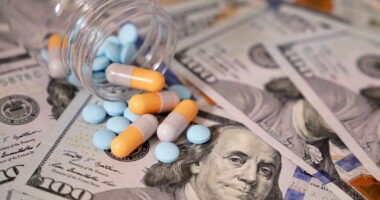Best Practices: Ranking the Leaders in Supply-Chain Management
Which companies rate the highest in supply-chain management practices? The management consultancy, The Gartner Group, ranks the Top 25 in supply-chain management.
Unilever scored the top spot for the third year in a row and two pharmaceutical companies and one chemical manufacturer made the top rankings. DCAT Value Chain Insights takes an inside look of the top companies.
Inside the rankings
The Gartner Supply Chain Top 25 for 2018 marked the fourteenth consecutive year of the rankings. The Supply Chain Top 25 rankings comprise two main components: business performance and opinion. Business performance in the form of public financial and corporate social responsibility (CSR) data provide a view into how companies have performed in the past while the opinion component offers a view to future potential and reflects leadership in the supply-chain community. These two components are combined into a total composite score. The composite score is composed of these components: peer opinion, Gartner Research opinion, return on assets, inventory turns, revenue growth, and a CSR component.
“Looking back at 2017, we experienced a year of healthy growth, despite heated trade rhetoric,” said Stan Aronow, Research Vice President at Gartner, in commenting on the rankings. “Now, in 2018, protectionism is spreading in response to announced moves by the US and the UK among others. This has led many organizations to re-evaluate the location strategy for their supply networks. We also see strong growth constraining available supply in many geographies, increasing the cost of logistics and labor. The most advanced supply chains are proactively managing these risks and continue to post solid performances.”
The consumer products company, Unilever, scored the top spot for the third year in a row (see Table I at end of article). “Unilever has a strong supply-chain brand, which is reflected by its top-tier opinion poll score,” said Aronow. It also received a perfect 10 for corporate social responsibility (CSR). The Dutch consumer products leader is making big bets in the digitization of its supply chain. A key initiative is robotic process automation (RPA) supporting the order-to-cash process, run from its regional service control towers. Its more than 20 ‘bots’ have already automated hundreds of processes, with a roadmap for hundreds more,” he said.
In addition to Unilever, rounding out the Top 5 supply-chain leaders were: Inditex, a Spanish multinational clothing company; Cisco, a provider of information technology (IT) and networking services and products; the consumer-products company, Colgate-Palmolive; and the IT company, Intel (see Table I at end of article).
Home Depot (Number 23) rejoined the ranking after a three-year hiatus and Novo Nordisk (Number 13) and the sports clothing and sneaker company, Adidas (Number 24) joined the Supply Chain Top 25 see Table I at end of article) for the first time. Novo Nordisk’s thirteenth spot was the best ranking among pharmaceutical companies and chemical manufacturers. Johnson & Johnson, whose businesses span pharmaceuticals, consumer products, and medical devices, came in at Number 18. BASF, the second largest chemical producer, behind DowDuPont, followed at Number 19 and was the only chemical producer to make the Top 25 rankings in 2018.
Johnson & Johnson has ranked in the Top 25 Supply Chain Leaders over the past five years.It ranked as Number 13 in 2017, Number 21 in 2016, Number 21 in 2015, Number 22 in 2014, and Number 25 in 2013. The only other pharmaceutical company to make the Top 25 since 2013 was GlaxoSmithKline, which ranked Number 23 in 2016. BASF has been the only chemical company recently to make the Top 25. In addition to coming in at Number 19 in the 2018 rankings, BASF made the Top 25 as Number 16 in 2017 and Number 20 in 2016.
In addition to its Top 25 Supply Chain Leaders, Gartner analysts derive a Masters list of companies from a combination of the Fortune Global 500 and the Forbes Global 2000. Longtime supply-chain leader and the 2017 Top 25 runner-up, McDonald’s, joined Apple, Procter & Gamble, and Amazon in qualifying for the “Masters” category. Gartner first introduced the “Masters” category in 2015 to recognize sustained leadership over the last 10 years. In an effort to maintain the list of companies evaluated at a manageable level, a general annual revenue threshold of $12 billion is applied
“The key to McDonald’s success is skillful orchestration across a network of strategic suppliers, service providers and thousands of companies and franchise-owned stores worldwide,” said Mr. Aronow. “The company is also experimenting with digital supply-chain capabilities like augmented reality to manage storerooms, so staff can spend more time with the customer.
Best practices among the top companies
So what are the best practices among these supply-chain leaders? The Gartner Group identifies three key trends among supply-chain leaders that help propel them to the top: (1) a focus on customer experience; (2) scaling digital supply-chain capabilities; and (3) moving to circular supply-chain designs.
Customer experience. Gartner defines the customer experience as the customer’s perceptions and related feelings caused by the one-off and cumulative effect of interactions with a supplier’s employees, channels, systems and products. Gartner points out that leading companies recognize that their customers are heavily influenced by their supply-chain experience, such as in a late delivery disappoints, an expedited delivery is a positive. “Many leading supply chains are using digital connections with customers to better understand their use of products, predict future demand and more quickly respond to issues, even before they appear,” said Aronow.
Scaling digital supply-chain capabilities. After a first round of experiments, the Gartner Group says that leading companies are scaling the most viable digital supply-chain solutions in manufacturing facilities, warehouses, and corporate back offices. While automation is most common in manufacturing and logistics, there has also been a rise in digital customer service. “This includes RPA [robotic process automation] in the order-to-cash cycle and the use of trained artificial intelligence (AI) customer-service chatbots that customers may mistake for a human, due to their use of natural language,” notes the firm.
Moving to circular supply-chain designs. The Gartner Group points out that leading companies have changed their mindset when it comes to environmental sustainability. It points out that advanced supply chains now take a lifecycle-based approach to understand the total impact of products and operations across the value chain.
“There are many reasons why companies are pursuing these so-called ‘circular economy’ strategies,” said Gartner’s Aronow. “We often see an altruistic desire to do what’s best for the environment and society, combined with a commercial desire for continued differentiation in competitive markets. As a result, some companies are now recycling and repurposing old parts in new products and extending the lifecycle of existing equipment as part of broader circular business strategies.”
| Table 1. The Gartner Supply Chain Top 25 for 2018 | ||||||||
| Ranking | Company | Peer Opinion (25% of score ) | Gartner Opinion (25% of score ) | Three- Year Weighted Return on Assets (20% of score ) | Inventory Turns (10% of score ) | Three-Year Weighted Revenue Growth (10% of score ) | Corporate Social Responsibility Component Score (10% of score | Composite Score |
| 1 | Unilever | 2,413 | 667 | 10.3% | 7.5 | 2.6% | 10.0 | 6.36 |
| 2 | Inditex | 1,254 | 345 | 16.5% | 3.9 | 10.9% | 10.00 | 4.85 |
| 3 | Cisco Systems | 785 | 541 | 7.9% | 13.1 | -0.4% | 10.00 | 4.41 |
| 4 | Colgate-Palmolive | 898 | 324 | 17.6% | 5.1 | -2.2% | 10.00 | 4.40 |
| 5 | Intel | 831 | 499 | 8.9% | 3.6 | 4.8% | 10.00 | 4.36 |
| 6 | Nike | 1,349 | 270 | 17.4% | 3.8 | 6.8% | 6.00 | 4.25 |
| 7 | Nestlé | 1,326 | 426 | 6.4% | 4.8 | -0.2% | 10.00 | 4.21 |
| 8 | PepsiCo | 1,094 | 391 | 7.3% | 8.8 | -0.6% | 10.00 | 3.99 |
| 9 | H&M | 760 | 193 | 18.1% | 2.8 | 7.8% | 10.00 | 3.96 |
| 10 | Starbucks | 1,040 | 186 | 20.4% | 11.8 | 9.2% | 4.00 | 3.85 |
| 11 | 3M | 783 | 198 | 14.0% | 4.1 | 1.4% | 10.00 | 3.56 |
| 12 | Schneider Electric | 737 | 410 | 4.8% | 5.2 | -0.5% | 10.00 | 3.55 |
| 13 | Novo Nordisk | 121 | 49 | 37.9% | 1.2 | 5.3% | 10.00 | 3.37 |
| 14 | HP Inc. | 390 | 354 | 7.3% | 8.4 | 0.2% | 10.00 | 3.30 |
| 15 | L’Oréal | 999 | 210 | 9.6% | 2.9 | 4.6% | 8.00 | 3.26 |
| 16 | Diageo | 651 | 227 | 9.2% | 1.0 | 7.6% | 10.00 | 3.25 |
| 17 | Samsung Electronics | 907 | 117 | 10.7% | 14.6 | 9.8% | 9.00 | 3.22 |
| 18 | Johnson & Johnson | 880 | 322 | 6.2% | 2.7% | 2.8% | 6.00 | 3.08 |
| 19 | BASF | 470 | 281 | 6.9% | 4.4 | -0.5% | 10.00 | 3.02 |
| 20 | Walmart | 1,416 | 256 | 6.2% | 8.3 | 1.6% | 3.00 | 2.98 |
| 21 | Kimberly-Clark | 619 | 133 | 13.6% | 6.7 | -1.6% | 8.00 | 2.96 |
| 22 | The Coca Cola Company | 1,558 | 221 | 4.6% | 4.8 | -10.1% | 4.00 | 2.87 |
| 23 | Home Depot | 431 | 78 | 18.6% | 5.1 | 6.7% | 5.00 | 2.81 |
| 24 | Adidas | 821 | 115 | 6.8% | 2.9 | 13.5% | 7.00 | 2.58 |
| 25 | BMW | 679 | 118 | 4.1% | 4.2 | 6.0% | 10.00 | 2.45 |
Source: The Gartner Group (May 2018).
Gartner Opinion and Peer Opinion: Based on each panel’s forced-rank ordering against the definition of “Demand-Driven Value Network (DDVN) orchestrator.”
Return on assets (ROA): (2017 net income/2017 total assets)*50% + (2016 net income/2016 total assets)*30% + (2015 net income/2015 total assets)*20%
Inventory Turns: 2017 cost of goods sold/2017 quarterly average inventory.
Revenue Growth: (Change in revenue 2017-2016)*50% + (change in revenue 2016-2015)*30% + (change in revenue 2015-2014)*20%.
Corporate Social Responsibility (CSR) Component Score: Index of third-party corporate social responsibility measures of commitment, transparency and performance.
Composite Score: (Peer Opinion*25%) + (Gartner Research Opinion*25%) + (ROA*20%) + (Inventory Turns*10%) + (Revenue Growth*10%) + (CSR Component Score*10%).
2017 data used where available. Where unavailable, latest available full-year data used. All raw data normalized to a 10-point scale prior to composite calculation. “Ranks” for tied composite scores are determined using next decimal point comparison.






